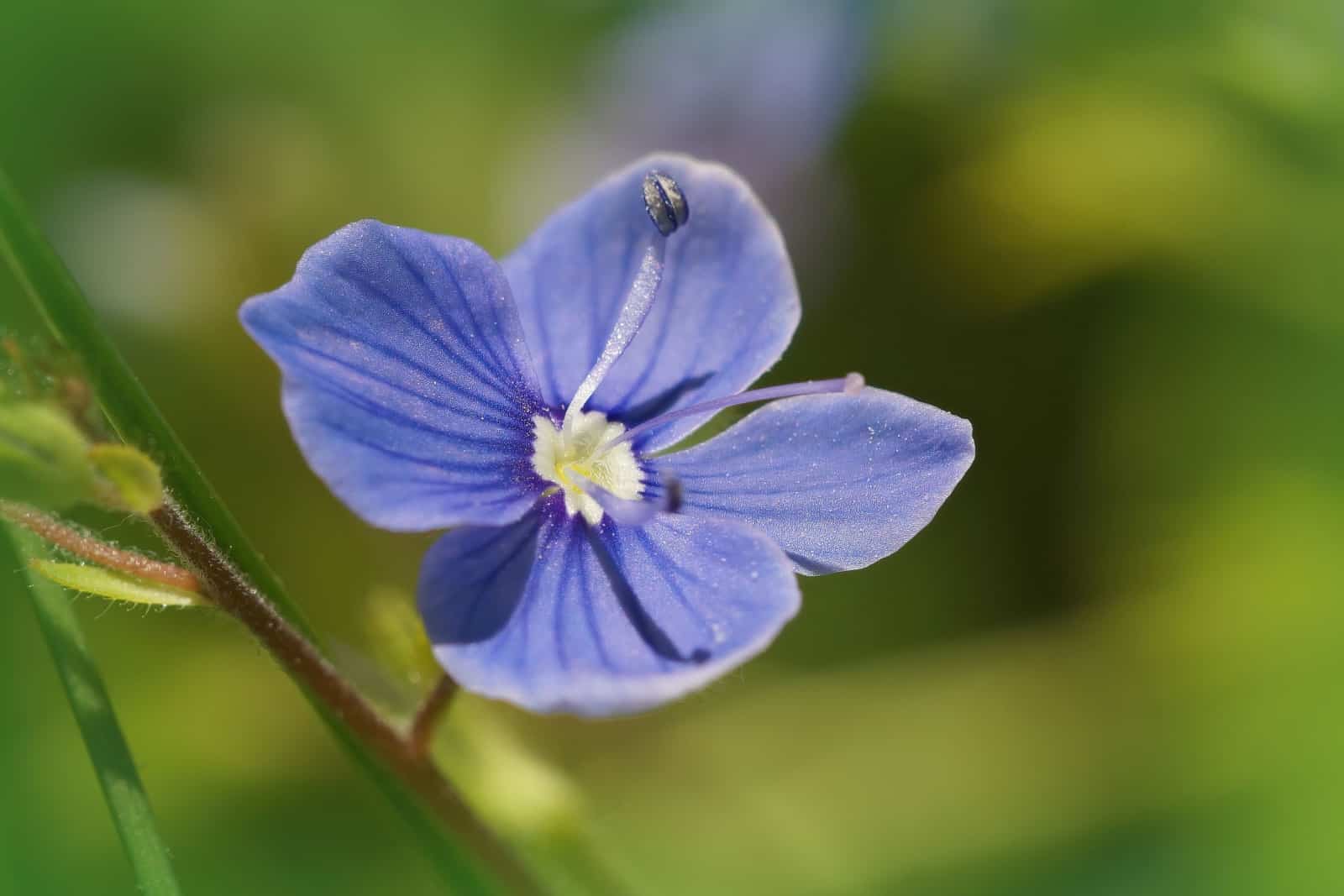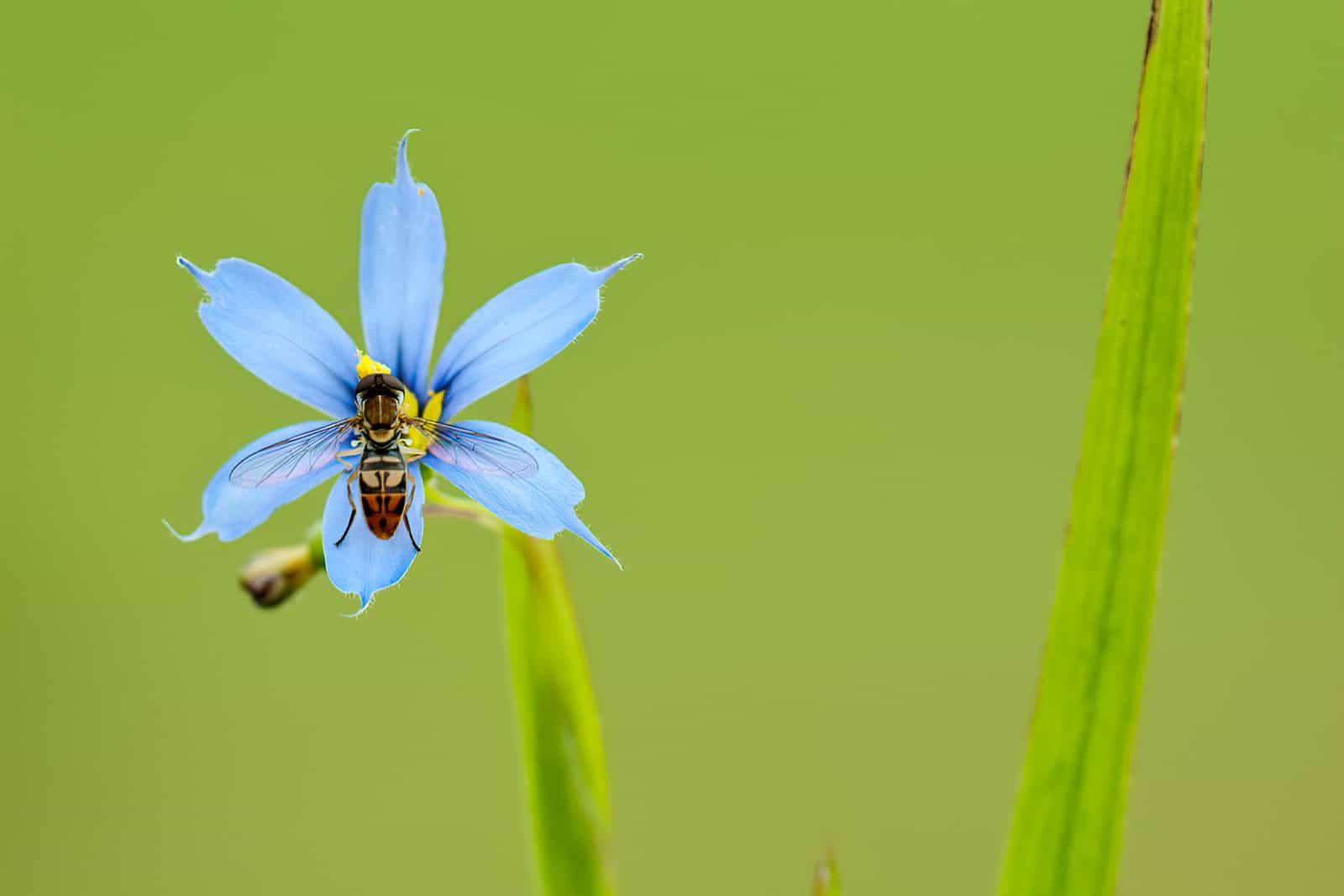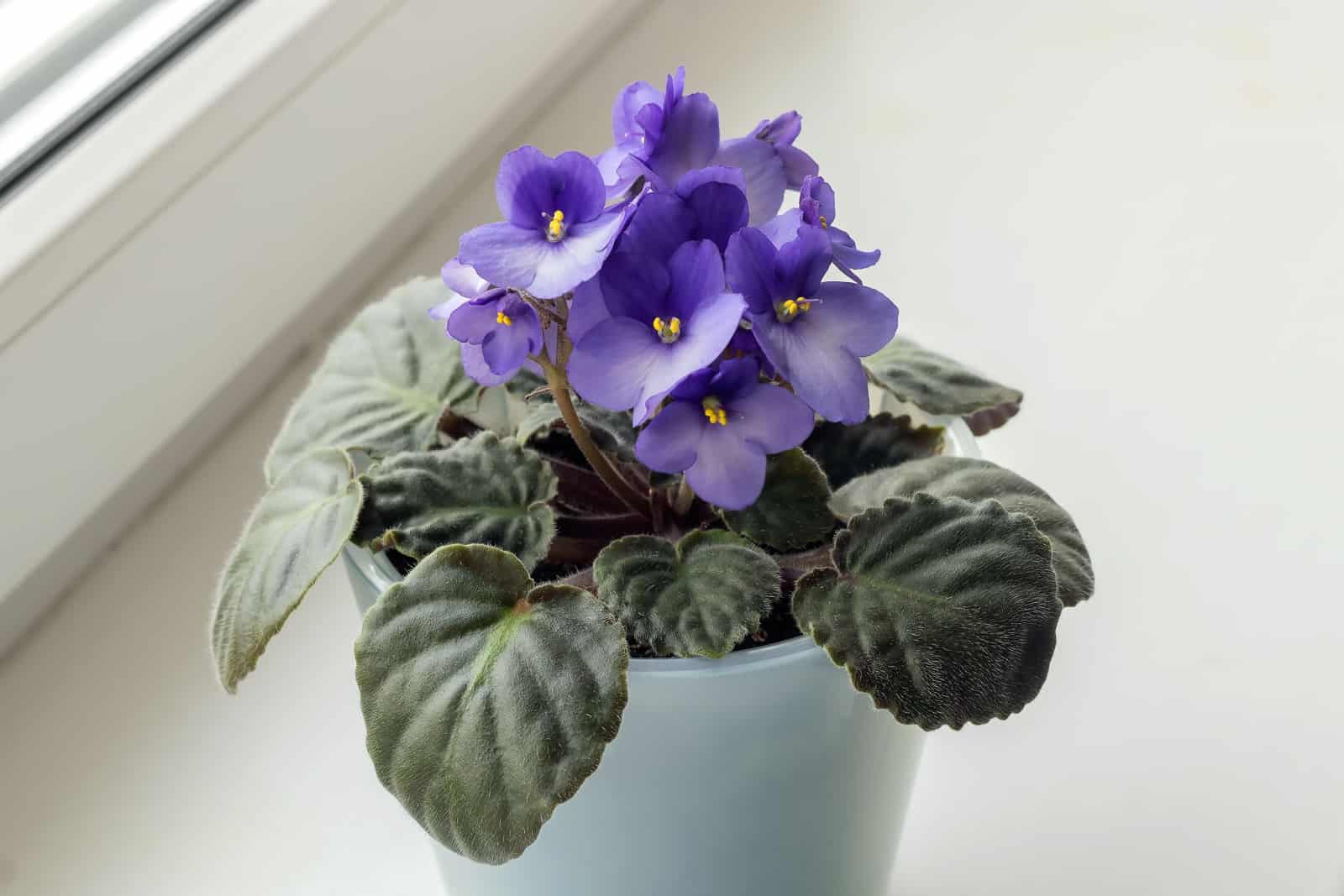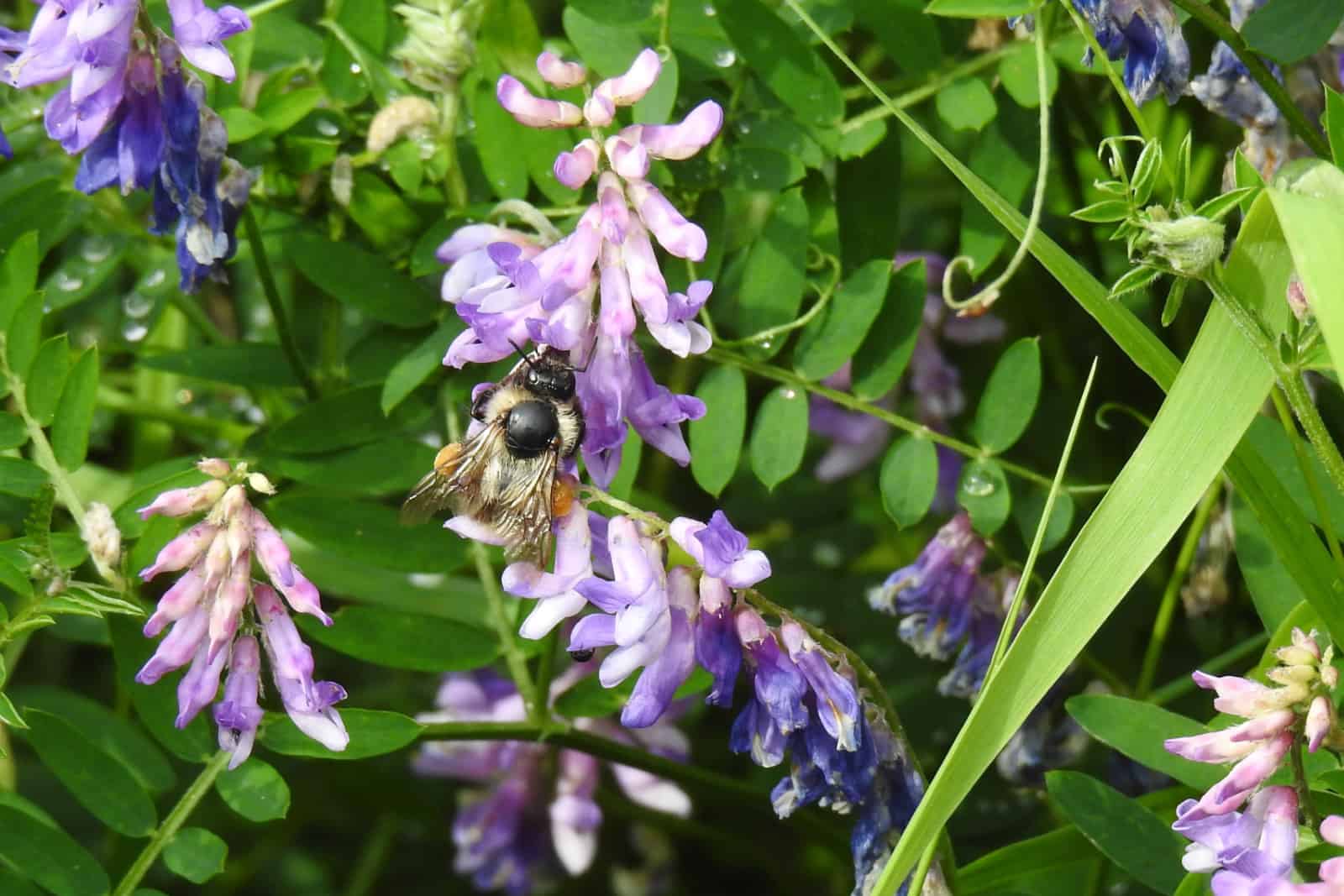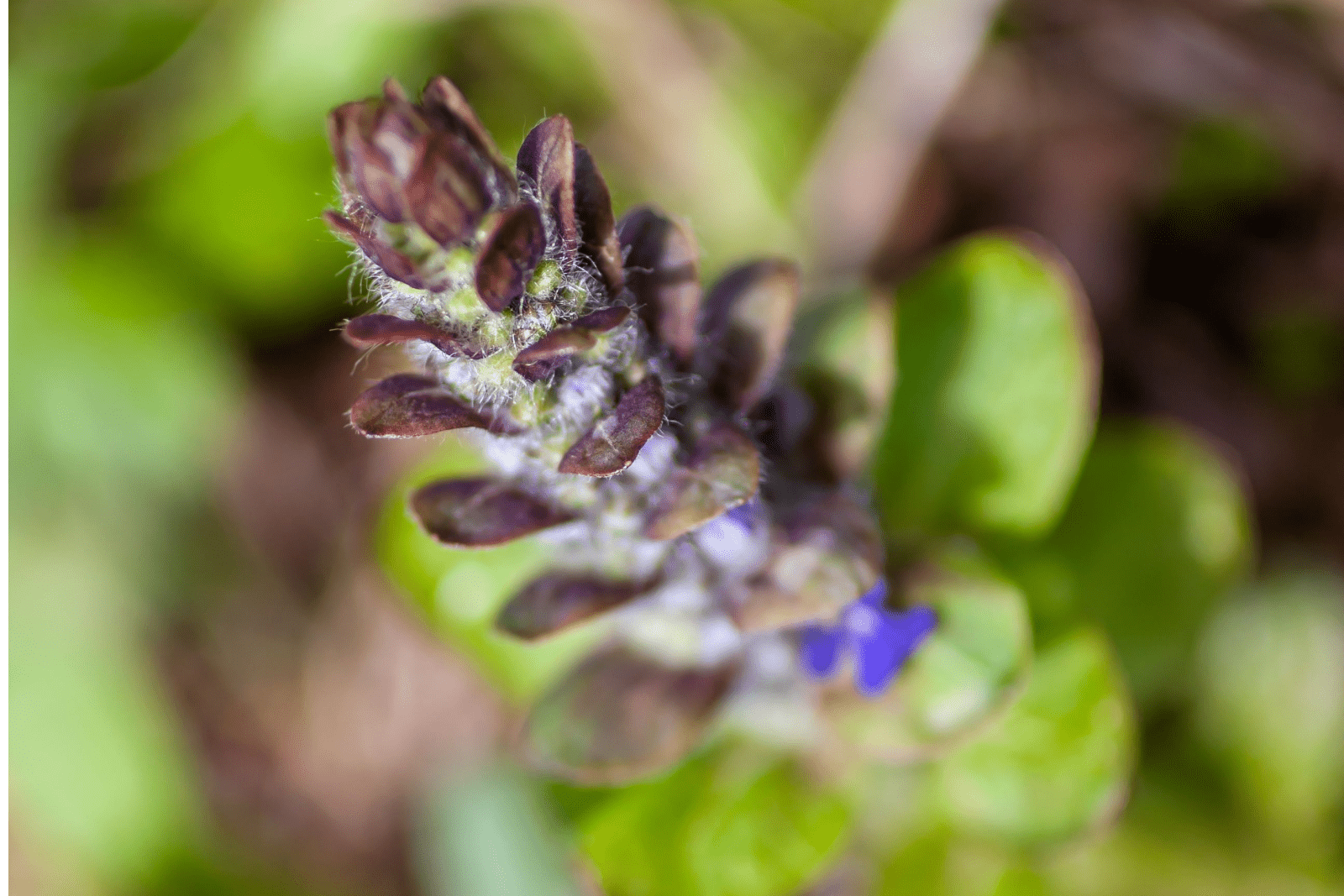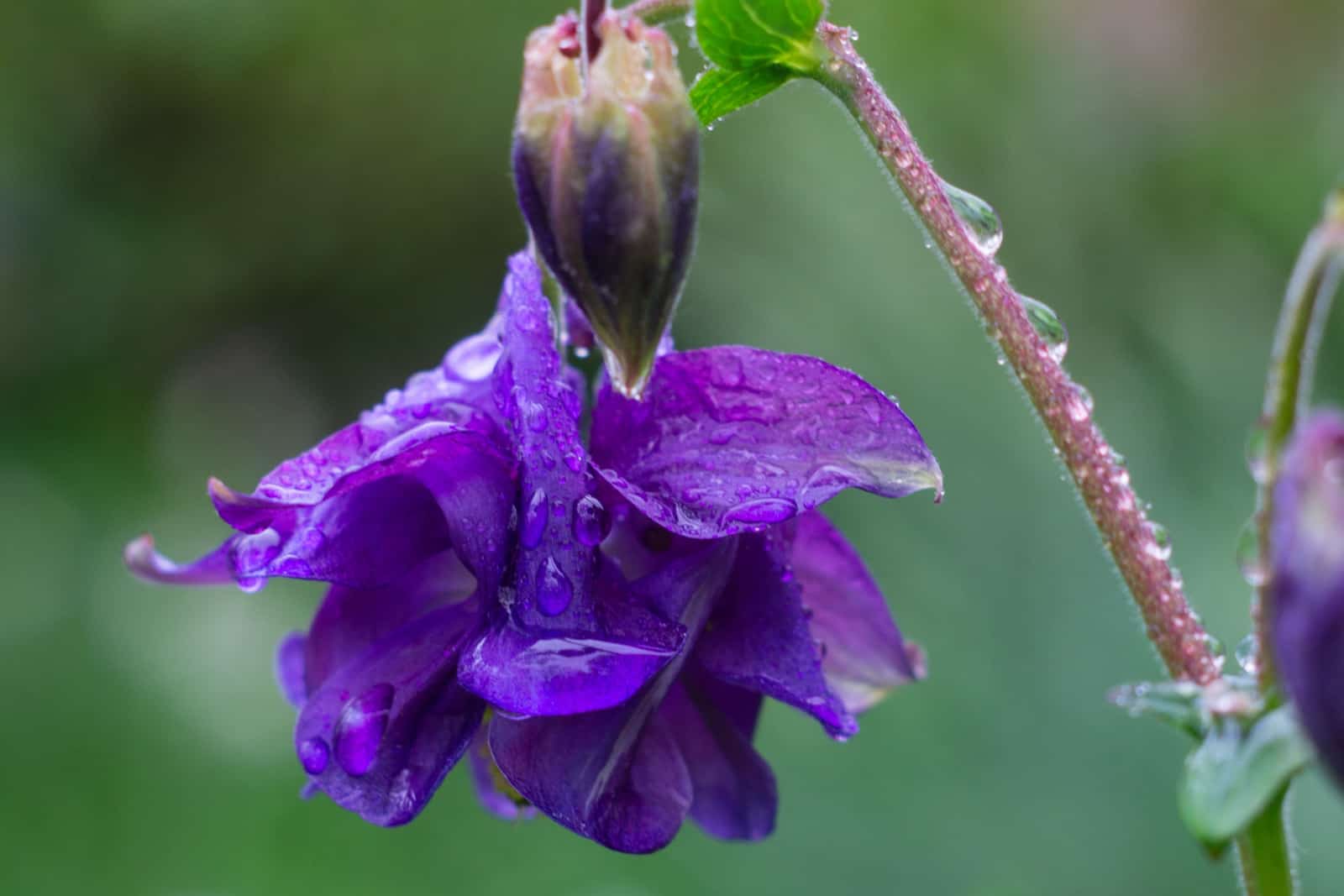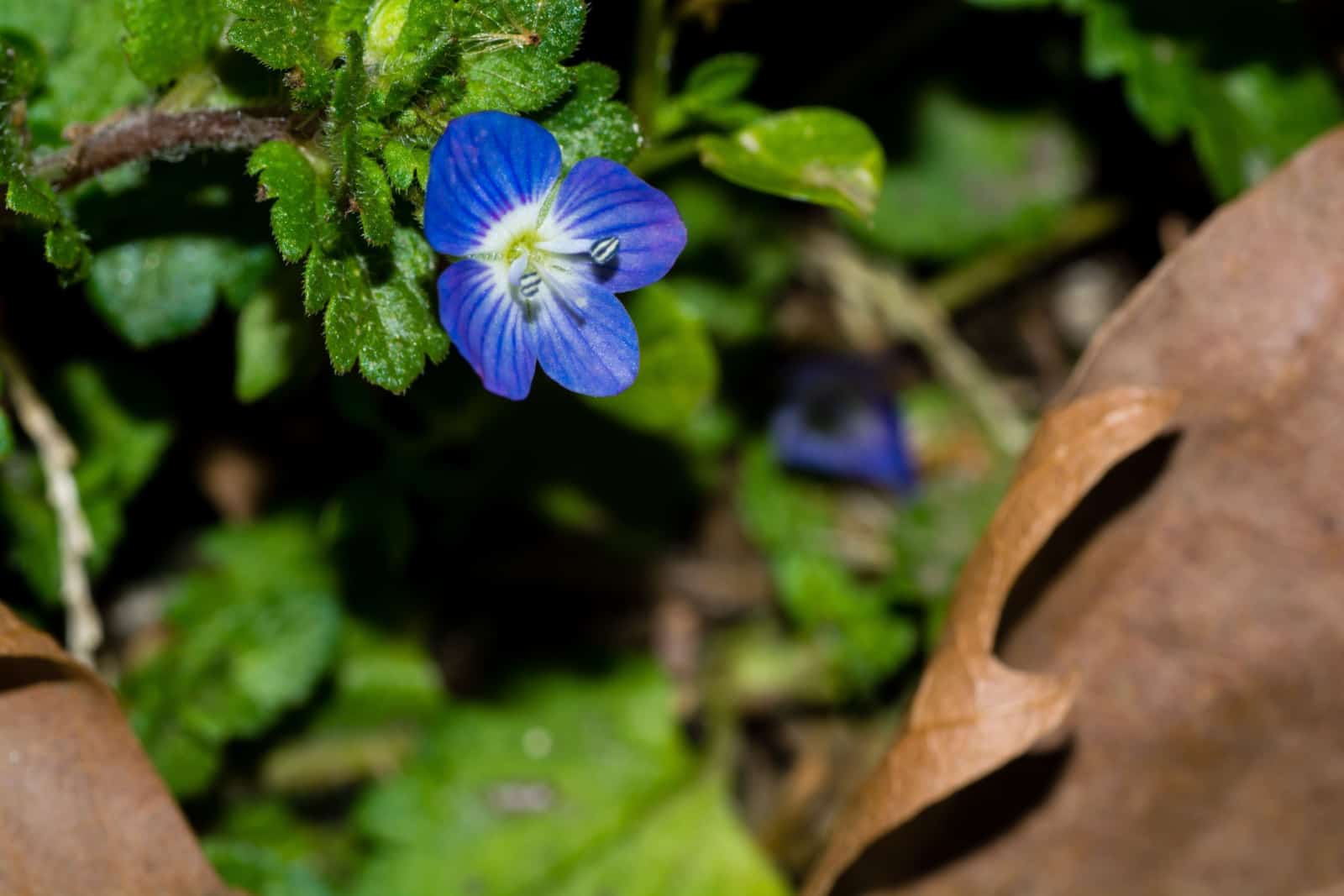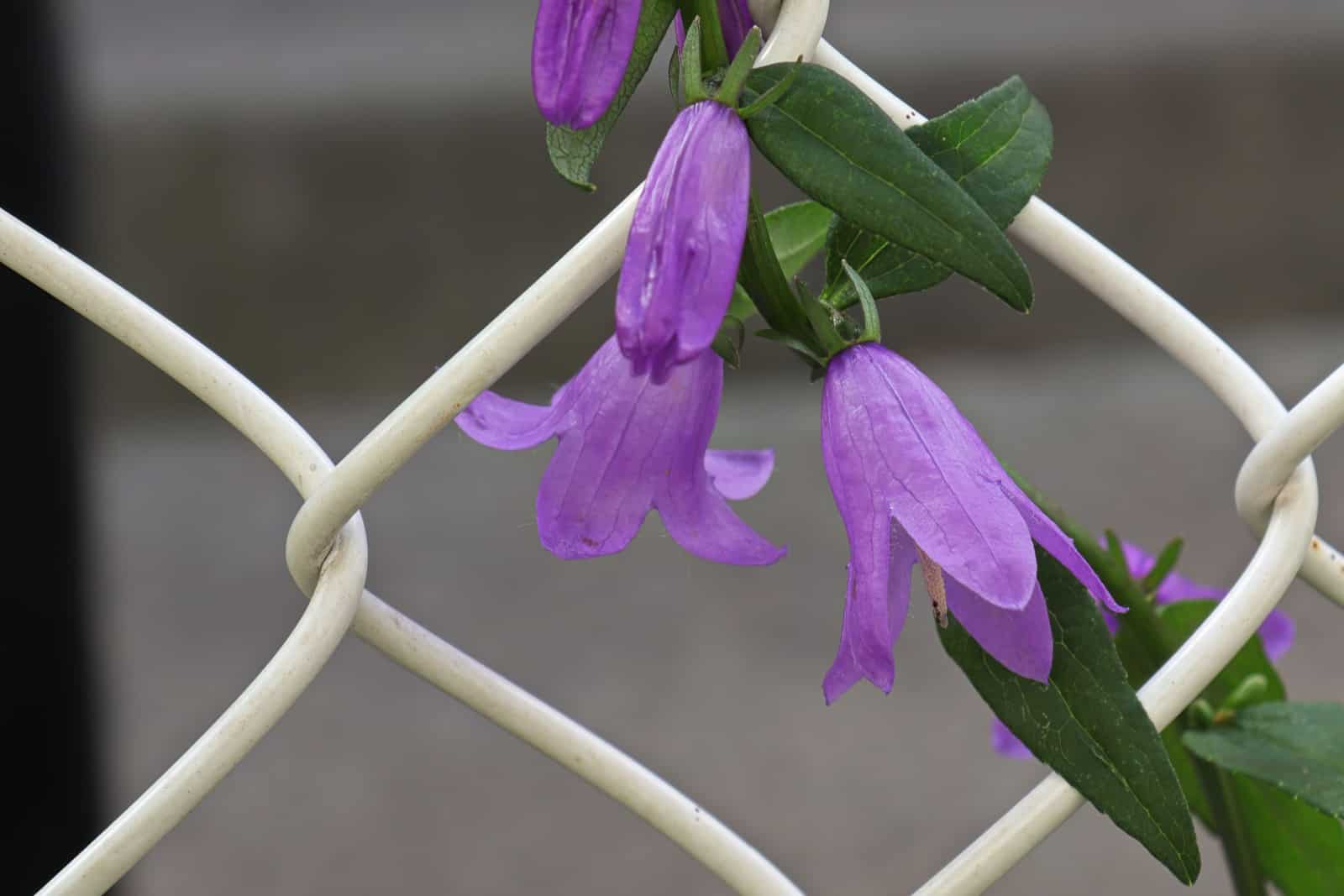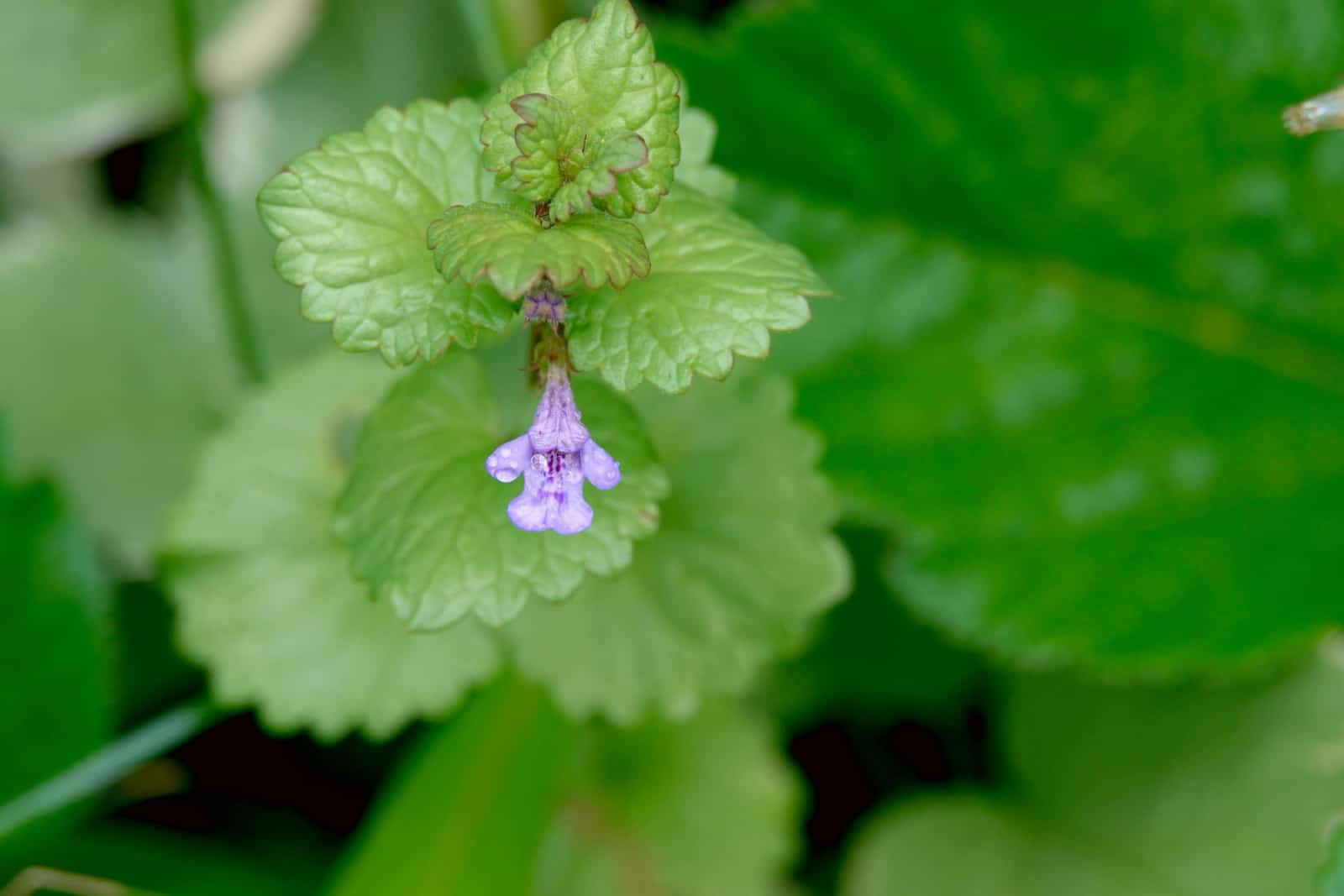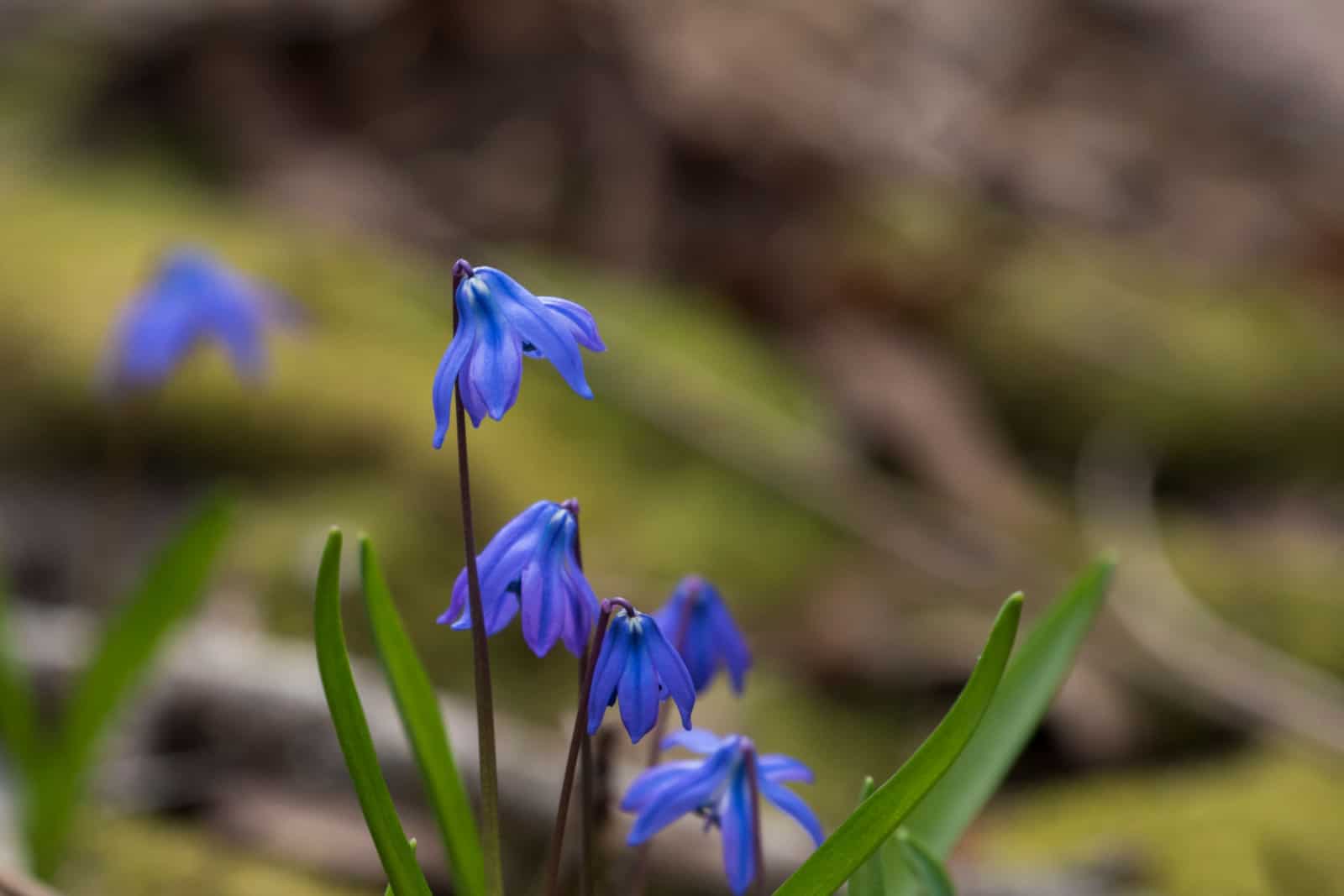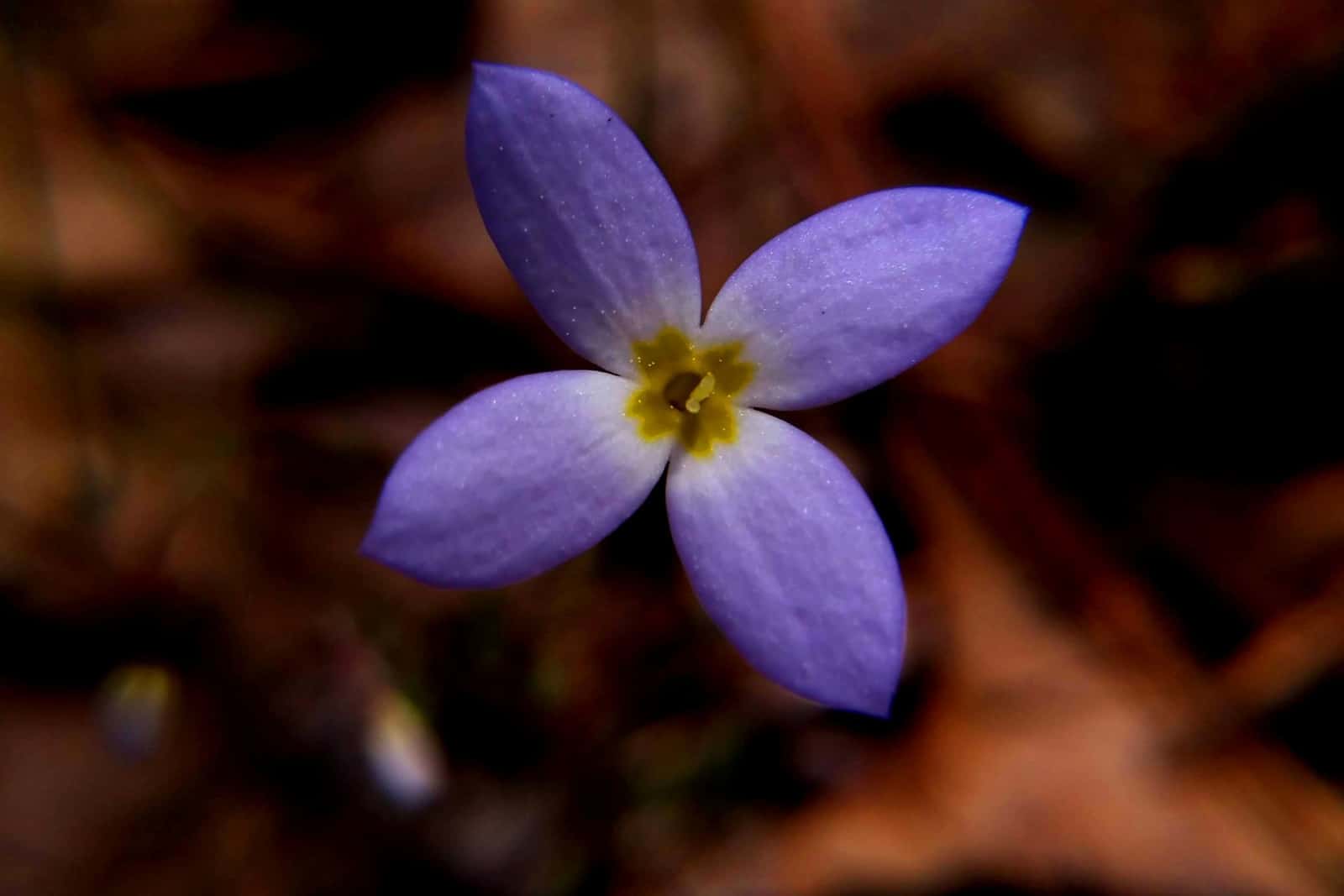Suburbs all over the United States pride themselves on their lawns, and for good reason. Deep-green grasses make an awe-inspiring sight, but there are some things that can prevent us from achieving this.
A big problem is weeds. They may look idyllic in a country-side landscape, but once they mar the look of your lawn you’ll want to get rid of them fast.
That’s why I decided to write about weeds with blue flowers that may appear in your yard, and give you some tips for controlling and removing them.
Let’s take a closer look.
Asiatic Dayflower
Identification: This mosquito-looking plant with blue blossoms can get 1-3 feet tall, and its dense and dark green leaves create an unsightly contrast to your lawn.
Consequence: This plant is native to South Asia and is considered invasive in many other regions. It spreads by seeds and leaf nodes, creating roots quickly and suffocating other plants.
Control: The Asiatic dayflower is a hardy weed that’s very difficult to remove once it spreads. Therefore, if you notice a couple of blossoms on your lawn, pull them out along with their root systems so as to prevent further spreading. And if they’re all over your lawn, use a herbicide with flumioxazin as it provides great control all season. (1)
Bird’s-Eye Speedwell (Germander speedwell)
Identification: The tiny blue-violet flowers and serrated oblong or pointy foliage of the germander speedwell look amazing in nature, but not on tended lawns. Luckily, the plant only gets about 4-14 inches tall, so it won’t stand out too much.
Consequence: One of the things that makes this plant terrible for your lawn is that it spreads by rhizomes and stolons. However, only Alaska and West Virginia list it as invasive, so it won’t overcome your grass too quickly. (2)
Control: You can easily get rid of this weed by hand-pulling if it’s concentrated in one area, or by using general-purpose herbicides. Of course, different grasses react differently to these chemicals, so make sure to find the best bermuda grass weed killer on the market (or the variety that suits best your lawn grass).
Blue-Eyed Grass
Identification: This plant has white, pale blue, or deep violet blossoms framed with narrow, grass-like yellow or dark-green foliage. It grows in clumps and grows 2 feet tall or less, depending on the cultivar. (3)
Consequence: This plant can self-seed, but it’s not aggressive since it’s native to North America, so it won’t spread out as quickly as some other weeds. However, the tall clumps will mismatch your lawn color, and appear uneven and unsightly.
Control: The first step for keeping this weed away from your turf is by caring for your lawn properly, meaning regular mowing, watering, and fertilization. And if this doesn’t help, you can use pre-emergent weed killers or post-emergent broadleaf herbicides. (4)
Blue Violet
Identification: This weed is more purple than blue and can look amazing as a border plant, but not in the middle of your lawn, although I personally don’t mind it. It has heart-shaped, deep green leaves and doesn’t get taller than 4-6 inches.
Consequence: The clumps aren’t that visible on high-cut lawns and aren’t that big of a deal. Additionally, this plant is native to eastern North America, so it won’t overcome your grass. On the other hand, it spreads with seeds and rhizomes, so you should control it before it gets all over your yard.
Control: The best way to maintain a blue violet-free lawn is to care for your turf properly by fertilizing, watering, and mowing it on time. But if you still notice some clumps here and there, you can hand-pull them or use herbicides containing triclopyr in spring or fall. Refrain from mowing your lawn 2-3 days before and after applying this substance.
Bush Vetch
Identification: The lilac-blue blooms of bush vetch usually appear in woodlands and along hedgerows, but they can find their way onto your lawn as well. It has a climbing habit, pinnate, slimy green leaves, and can grow to 40 inches tall.
Consequence: This plant is edible, can fixate nitrogen, and attracts various insects, but it doesn’t look good on lawns. Since it gets much taller than grass, it will add an unsightly structure to your lawn. It also spreads by rhizomes and seeds, so it takes more work to remove it.
Control: Mow and pull it regularly to prevent it from self seeding. However, since it can spread from rhizomes, you should use herbicides with triclopyr or 2,4-D to get rid of it completely.
Carpetweed
Identification: This weed forms a short mat that can spread up to 2 feet wide and get 5 inches tall. The plant has star-shaped flowers and dull green, smooth, and spatulate leaves. (5)
Consequence: It is a non-native plant that spreads by seeds and can quickly take over the turf.
Control: Proper lawn maintenance will ensure your grass outgrows this weed, so you won’t have to use any chemicals. However, if this doesn’t work, you can easily pull it out by hand or use pre- and post-emergent weed killers with triclopyr, dicamba, and 2,4-D as active ingredients.
Chicory
Identification: This partly woody plant bears bright blue or occasionally white flowers on tall stalks. It can extend up to 5 feet into the air and bear sporadic lanceolate leaves.
Consequence: The plant has deep roots and spreads by seeds and roots, but not as aggressively as some other weeds. However, since it can get quite tall, it will taint the clean look of cour lawn.
Control: If you mow your lawn regularly, chicory won’t be able to produce flowers and spread seeds. However, if you still don’t like the patches it leaves on your lawn, you can spot treat it with MSM turf herbicide. You can also pull out the entire plant, just make sure to moisten the soil beforehand since this weed has deep roots.
Common Columbine
Identification: I don’t know what it is about this flower, but I don’t mind it springing up on my lawn. You can easily recognize it by its downward-facing bonnet flowers and buttercup foliage. The plant grows in clumps, spreads up to 20 inches, and can get up to 3 feet tall.
Consequence: This plant self-seeds rapidly and can overtake your lawn. Since it thrives in well-maintained grasses, it is all the more difficult to get rid of. Its clumpy appearance and height look unappealing on well-maintained turf. Common columbine can also irritate skin, so make sure to wear gloves when removing it.
Control: Mowing your lawn and the columbine regularly will prevent it from producing seeds, but won’t remove the root of your problem. Instead, you’ll have to pull out its entire root system or use herbicides.
Corn Speedwell
Identification: This common lawn weed has lovely cup-shaped flowers, but they have no place on your lawn. The bottom foliage is serrated and rounded, while the top is smaller and more pointy. Luckily, it is a small-growing plant that only reaches 2-12 inches, so your high cut grass can hide it.
Consequence: Corn speedwell spreads by seeds and can get invasive, ruining the clean texture of your lawn and suffocating it in the process.
Control: It thrives on thinner turfs, so make sure to choose a dense grass variety, overseed it regularly, and don’t forget about timely fertilization, mowing, and watering. Use pre-emergence weed killers with dithiopyr, pendimethalin, and prodiamine, or post-emergence herbicides with 2,4-D, dicamba, 2,4-DP, quinclorac, and similar. (6)
Creeping Bellflower
Identification: The bell-like flowers of this plant are more purple than blue, but it falls under this category. This weed has deltoid leaves and usually reaches a height between 1 and 3 feet.
Consequence: The plant quickly spreads by roots, rhizomes, and even fallen leaves, overcoming your turf and other plants in a short period of time. It is aggressive and resistant to 2,4-D weed killer, so you’ll have to be creative with its removal. (7)
Control: One way to remove this plant is by pulling its entire root system out of the ground. However, you need to make sure that you’ve got all the rhizomes, and this may require deep digging. Additionally, you can use herbicides, but since it’s resistant to the 2,4-D active ingredient, you should use ones that contain dicamba.
Creeping Charlie
Identification: This plant goes by many names, although creeping Charlie and ground ivy are the most common ones. It has funnel-shaped blossoms that are more purple than blue, and round, toothed leaves. The plant usually spreads 1-2 feet and reaches a height of 4-8 inches.
Consequence: The plant spreads by seeds and stolons, and is considered invasive. It can choke out your lawn. (8)
Control: By keeping your grass healthy, you can encourage it to grow and overcome creeping Charlie. And since this weed thrives in shaded and moist locations, try growing a drought-tolerant, sun-loving grass. Additionally, you can use herbicides with triclopyr, dicamba, 2,4-D, and MCPP. (9)
Creeping Speedwell (Slender Speedwell)
Identification: The mat-forming creeping speedwell has tons of tiny blue flowers and foliage to show off. However, they don’t complement an all-green lawn, which is why we want to eradicate them as soon as possible. However, it usually gets around 2-5 inches tall, so you can hide it for some time until it spreads.
Consequence: Creeping speedwell usually spreads by stolons and is considered invasive, which is why you don’t want to let it get out of hand.
Control: This weed can tolerate various compounds, such as dicamba, MCPA, 2,4-D and similar. Instead, look for herbicides containing diflufenican or use a mixture of mecoprop and ioxynil. (10)
Forget-Me-Not
Identification: Forget-me-nots are short-lived in Florida, and I really love their tiny blue, white, or pink flowers, which is why I don’t eradicate them. They have widely winged leaves which narrow down to a pointy top. The plant usually gets around 4-12 inches tall and 8-12 inches wide, although some species can get up to 2 feet tall.
Consequence: Forget-me-nots can self-seed and easily spread all over the garden, and they might choke your lawn and other plants. It is also listed as invasive in certain states. (11)
Control: The best way to successfully control forget-me-nots is by either removing their flower heads or mowing them to the ground before they self-seed. You can then pull their root systems or use post-emergent herbicides to eradicate them.
Henbit
Identification: It is easy to mistake this weed for dead nettle, although one thing that helps is by looking at its leaves. Henbit has somewhat rounded or egg-shaped, serrated leaves that are deep green in shade. Its flowers are purple and it grows to about half a foot tall and a foot wide.
Consequence: A single plant can produce 40-200 seeds and multiply rapidly, which is why it’s thought of as an aggressive species in some US states.
Control: The best way to control its growth is by maintaining your lawn properly or pulling it out by hand or with some tools before it flowers. You can also use herbicides, but since suitable lawn care can limit its growth, there’s usually no need. (12)
Siberian Squill
Identification: The flowers of this plant are a mixture of bells and stars accompanied by grass-like leaves. Siberian squill does resemble snowdrops, and it can get 4-8 inches tall and 5 inches wide.
Consequence: The Siberian squill spreads by seeds, which it produces rapidly, and bulbs, so it can overcome your lawn in no time. It isn’t native to North America, which is why it can become invasive in certain situations.
Control: If you catch it early, you can pull the individual clumps by hand. However, if it’s already spread all over your lawn, you should cover it with black plastic, cardboard, or any other material that will prevent it from photosynthesizing. Afterwards, you’ll need to overseed your lawn. If this doesn’t help, use weed killers with glyphosate.
Shamrock Pea (Blue Oxalis)
Identification: The blue blossoms of this plant resemble inverted hearts with their classic bright or deep green clover leaves. This weed is also short and only reaches a height of about 4-8 inches.
Consequence: Blue oxalis spreads by rhizomes and seeds, and can quickly invade your yard. However, it isn’t invasive, so at least we have some small comfort.
Control: Proper lawn maintenance in terms of mowing, fertilization, and watering will reduce your shamrock pea problem extensively. However, the best thing you can do is pull its entire root system out of the ground as soon as you notice it so that it doesn’t spread all over your lawn.
Tiny Bluets
Identification: Tiny bluets is a plant with lovely, four-petal, violet-blue flowers, and it would look lovely on my lawn if only there weren’t those unsightly opposite leaves! It doesn’t get taller than 4-6 inches, so at least lawn grasses can cover it up.
Consequence: This plant spreads easily on thin and stressed lawns thanks to its production of numerous seeds. Fortunately, it’s only potentially invasive, so you’ll have time to deal with it before it overtakes your yard.
Control: Since this plant has a weak root system, you can easily pull it from the ground. Do this before it flowers so that you don’t accidentally spread its seeds while removing it. And to reduce the chances of recurrence, maintain your lawn properly by regularly feeding, mowing, and watering it.
Final Thoughts
Now you know how to recognize and treat your lawn for 17 of the most common weeds with blue flowers.
You can keep your yard pure green or leave some native species if you want to add a splash of color since they won’t spread and suffocate your other plants.
Until next time!
References:
1. Wiesbrook, M. (2013). Asiatic Dayflower The Little Beauty that Caused So Much Confliction. Home, Yard & Garden Newsletter, University of Illinois Extension.
2. Germander Speedwell: Veronica chamaedrys L. (n.d.). Invasive.org, Center for Invasive Species and Ecosystem Health.
3. Mahr, S. (n.d.). Blue-Eyed Grass, Sisyrinchium. UW-Madison, Wisconsin Horticulture Division of Extension.
4. Leonard, D. J. (2021). Blue Eyed Grass, Annoying Weed or Pretty Native Plant? It Depends!. UF, IFAS Extension.
5. Mahr, S. (n.d.). Carpetweed, Mollugo verticillata. UW-Madison, Wisconsin Horticulture Division of Extension.
6. Landschoot, P., Delvalle, T., & Abbey, T. (2022). Lawn and Turfgrass Weeds: Corn Speedwell. PennState Extension.
7. Creeping Bellflower: Campanula rapunculoides L. Garden, University of Minnesota Extension.
8. Gupta, A., Rager, A., & Weber, M. M. (2020). Creeping Charlie. University of Minnesota Extension.
9. Mahr, S. & Stier, J. (2010). Creeping Charlie. UW Horticulture.
10. Creeping Speedwell (n.d.). Massey University, University of New Zealand.
11. True Forget-Me-Not: Myosotis scorpioides L. (n.d.). Invasive Plant Atlas of the United States.12. Mahr, S. (n.d.). Henbit, Lamium amplexicaule. UW-Madison, Wisconsin Horticulture Division of Extension.


